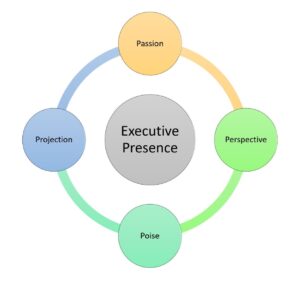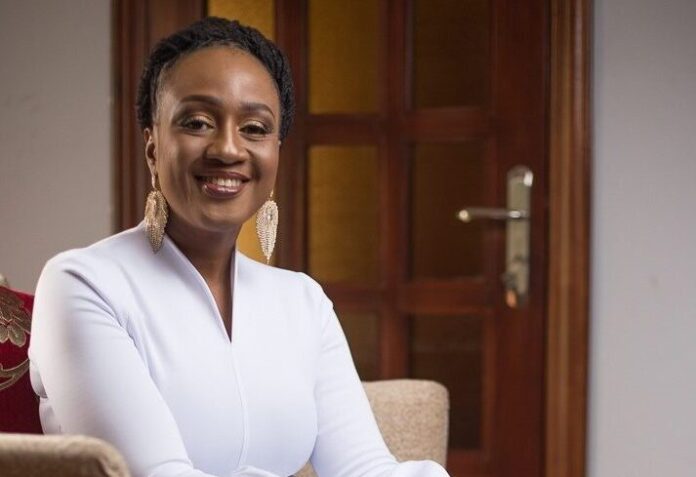- Executive presence for women leaders
I have been asked on several occasions whether the communication from a male leader and a female leader should vary, especially when it comes to nonverbal communication. In many of my articles, I have spoken extensively on the importance of both verbal and nonverbal communication, however with a bias for nonverbal communication. This is simply because nonverbal communication accounts for a greater percentage in the frequency of our communication.
Extensive research has shown that the unconscious mind processes averagely 11 million bits of information per second, whereas the conscious mind does 40 bits. This may account for why many messages communicated by leaders get lost in translation and explain the misalignment in verbal communication and nonverbal communication.
The executive presence or leadership presence is a very essential aspect in the communication of a leader and relies heavily on nonverbal communication. It is felt in how you command a room full of people and how you communicate. Indeed.com explains that executive presence is the combination of personality and character traits that make a dynamic executive. It’s the ability to inspire others to be assertive in their roles through the consistent demonstration of confidence and clear leadership. Executive presence allows leaders to understand their team member’s needs in correlation with the needs of the business.
An executive presence is composed of many individual characteristics that are essential to good leadership. When combined, they make an executive who can become the driving energy of a company. For this reason, employees with executive presence skills are often in leadership positions. In its simplest terms, executive presence is about your ability to inspire confidence — inspiring confidence in your subordinates that you’re the leader they want to follow, inspiring confidence among peers that you’re capable and reliable and, most importantly, inspiring confidence among senior leaders that you have the potential for great achievements.
Listed are a few components of executive presence: composure, connection, confidence, credibility, character, command, charisma, conciseness.
The way you present yourself physically is also a factor. It is neither aggressive nor meek. It is a perfect balance of verbal and nonverbal communication that allows your personality to shine through and influence people to take action. The manner in which the leader speaks, the use of hand gestures, posture and many other factors highlight the level of confidence of a leader. Yet, many women leaders have suffered many challenges following the same rule book of executive presence.
Unfortunately, the female gender to begin with, is not seen by many as a suitable fit for the position of leadership. There is a popular term, the Double-Blind Paradox, that explains the bias for the preference of males as leaders. As males rise in rank and status at work, they retain and often increase their perceived likeability. On the other hand, the more women project a status of power and authority, the less they are liked and the more they are ridiculed. They are told they are too aggressive, too strong in tone, too stiff etc. Mind you, these are women very capable of doing an equally great job as their male counterparts. They should be given the liberty to lead with confidence as it should be for every leader.
Executive presence accounts for 26% of what it takes to get a promotion. Given it’s an advanced skill, it’s particularly relevant for groups who face clear obstacles on the path toward leadership, such as women, and especially women of color. We talk a lot about disparities in the C-suite, or the highest levels of leadership, where women represent only 21% of executives, and women of color only 4%. But as this research from McKinsey reveals, the issue begins much earlier, with promotion bias at the earliest levels. For every 100 men promoted to management, only 72 women are given the same role.
In other words, from the earliest promotions, women advance to management at 72% the rate of men. From the very first rung, the ladder to the top is different for women. Or, as the McKinsey report suggests, the rungs are broken. The glass ceiling is thick. The United Nations recently found that close to 90% of men and women hold some sort of bias against women. To have a breakthrough presence, you have to break stereotypes and not be afraid to be disagreeable once in a while.
 In developing your Executive Presence as a woman, be true to yourself and remain authentic. This requires you to be assertive. Asserting oneself means respecting yourself by speaking up your mind, respecting others by acknowledging their point of view and, without expectation of them necessarily agreeing with you.
In developing your Executive Presence as a woman, be true to yourself and remain authentic. This requires you to be assertive. Asserting oneself means respecting yourself by speaking up your mind, respecting others by acknowledging their point of view and, without expectation of them necessarily agreeing with you.
This is different from aggression, which disrespects others; and from passivity, which disrespects yourself. If you are passive-aggressive, you disrespect both yourself and those around you. The benefit of developing an Executive Presence is that you show up like you belong.
The corporate class Inc shares that it is helpful for women to believe in their abilities and experiences. “Do not invalidate yourself or diminish your power.” The secret of executive presence for women, in many ways, is the same as it is for men…
- It is displaying your authenticity, your motivations and inspirations, and living them.
- It involves speaking the truth with assertiveness and not aggressiveness.
- It involves showing up at your authentic best, being present in the moment, and communicating challenges to your immediate loved ones and your teams to overcome challenges to be the best versions of ourselves.
I must point out a few errors that we make as female leaders that may communicate the wrong message. Firstly, it is difficult to communicate confidence and power when slouching. Slouching may communicate the idea of low-self esteem or very low confidence. This may communicate the same information when you avoid eye contact. As leaders, we need to understand the sort of emotion and message we are trying to send across and mindfully communicate it through our body language. We can comfortably switch between indicators of power and competence and signals of empathy and softness.
Here are a few key reminders on how we can rightly take charge of our spaces as women leaders and in most cases, as leaders in general.
- Be Mindful
The practice of being mindful can help you to make a habit of aligning your mind and body. As I mentioned earlier, it is essential to always have your verbal and nonverbal communication aligned, and this is one way to always communicate your messages with consistency. Yoga as an exercise or meditation session, although a popular helpful practice, has not made its home as a needed and relevant exercise in Africa. I recommend these two alternatives however for anyone reading this article. Not only do they help you keep a good strong body posture, they also help you connect with every part of yourself, giving you the needed stability and clarity, needed as a leader.
- Be Visible
Many women leaders, for fear of being ridiculed and criticized choose to stay in the dark. Hiding is no way to lead. If you are not seen, you cannot share, you cannot influence and you will not be followed. Consciously be a part of your organization by establishing decent relationships with both executive and ground level members. Simply be seen in action because leadership is largely about doing.
- Be Present
There are several ways you can communicate your presence. One way is to check your posture when standing and sitting. When sitting, do not make yourself small by crossing your arms. Keep your chest area open and your shoulders straight and well rounded. When you are speaking do not avoid eye contact. Establishing the right eye contact can earn you the trust you need from the person you are speaking to.
- Be You
When you are in a position, remember you are there because you fit that position. Be nothing less than yourself while you are there. I find that many women apologize for occupying a position they are very well qualified to assume. Your language must be bold. You should avoid starting a statement with “I’m sorry” if you are not apologizing for something you did wrong. There is nothing wrong with contacting a branding coach to polish the qualities you already have.
Dear woman, I hope you know that you are enough. Take charge of your space not because you know it all or are better than anybody but because you deserve it and can make the impossibilities happen. Have you heard about my new book, ‘The Essentials of Image Leadership?’ It is one handy workbook that you will need on your career journey. Grab a copy for yourself now to help in your preparation – understanding who you are and what you are capable of based on your personality type; you will be glad to have your personal workbook where you can always refer to when the need arises. I am excited to assist you all the way through!
 Are ready to stand out and lead your Image?
Are ready to stand out and lead your Image?
Read my book: “The Essentials of Image Leadership”.
Designed with practical exercises for home or office,
This book gives you all the essential tips and
Tools needed to sail with success in your image.
It also touches on dining etiquette,
Ensuring that in every space you find yourself,
You make a personal impact and achieve influence.










